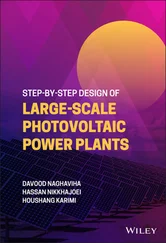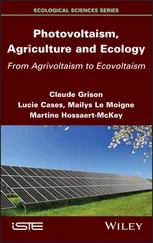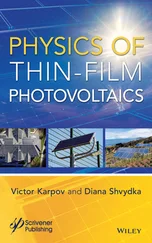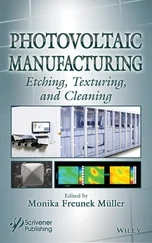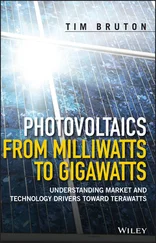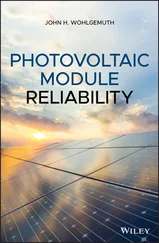(2.13) 
where R = 8.31447 Jmol -1K -1denotes the molecular gas constant, F = 96485,34 C mol -1the Faraday constant, T the temperature, n the number of transmitted electrons and D pH the difference of both potentials.
Other than in some horticultural and agricultural applications, indoor bioelectrochemical potentials are almost solely found in animals and humans. Rasmussen and coworkers demonstrated a biofuel cell with a power of 55 μW, that was implanted in a cockroach [37]. The output voltage was 0.2 V. Such implantable fuel cells can work as an alternative to batteries or cabled solutions with a main application field in medicine. Technical challenges include the low output voltage of around 0.2–0.4 V and the size, stability and nontoxicity of the cathodes. A review of the design, the current state-of-the-art and challenges in biofuel cells has been provided by Zebda et al. [38].
2.5 Electromagnetic Transmission
Other than all other forms of energy, electromagnetic emission, including within the optical range, can be sent on purpose for charging applications, as outlined in the introduction of this book by Joe Paradiso. This section focuses on the use of radio frequencies (RF) based on antennas (radio frequency harvesting).
In a simplified model, the efficiency ε RFof these systems is calculated from
(2.14) 
The output power thus depends on the emitted power, its distance to the RF harvester, and amount of damping in between. How much power the harvester can receive and convert to usable electric power, depends on the specific antenna design, its damping, and the rectification losses. Recent reviews on this topic have been provided by Serdijn et al. and Cansiz et al. [39, 40].
The inductive charging of electric toothbrushes is a daily life example of such systems.
Atomic batteries use the energy of the decay of a radioactive isotope. This energy is converted to electrical energy by different types of generators, such as thermoelectric or optical. Therefore, these systems can be defined as semi-ambient systems. The applied radioisotopes, such as Plutonium-238, are unstable. Their resulting continuous heat emission is used for electric conversion. In the early seventies, some implanted pacemakers were powered by radioisotope batteries based on Plutonium-238 and a TEG. About ten years later, Lithium-ion batteries superseded atomic pacemakers. Lal and coworkers demonstrated the excitation of a piezoelectric converter with radioisotopes [41]. Currently, atomic batteries have their main application field in space. A review on the topic has been published by Kumar [42].
This chapter focuses on micro energy harvesters for indoor applications other than photovoltaics. Some generators are already available commercially. A current challenge for researchers, product designers and customers is their lack of characterization and test standards. The reproducibility and comparability of test results and data sheets remain difficult, if not impossible, without standardized and representative test conditions.
Toxicity, recycling and lifetime are important topics for future energy harvesting systems, especially for IoT applications. The devices might remain in the field for decades, and some might even be forgotten or left installed after their functional life has ended. This needs to be considered during design. The long lifetime also poses a challenge to the security of IoT edge nodes. Such a system needs to protect and secure its data now and in the future, which might be 15 years ahead. So far, security has been neglected in many IoT and comparable systems. In addition, the visible and invisible interconnection of many edge nodes quickly results in giant networks of an accordingly high attack surface [43].
Finally, a common motivation for the installation of IoT devices is the classical idea of Big Data, that is, gathering as much data as possible in order to realize data analytics applications. However, from a statistical point of view, high quality data from a well-planned sample often yield a better result for these applications than an unlimited amount of data of unknown reliability [43, 44]. Thus, the real value gained from the data obtained by an IoT edge node needs to outweigh its cost to security, privacy, operational effort, toxicity, ecological considerations and so forth.
2.8 Conclusions and Outlook
The use of ambient energy to power low-power electronic devices seems like a natural choice today. This chapter presented the most common types of generators other than photovoltaic converters, their sources of energy, and typical output power levels for indoor applications. From these, kinetic converters including micro turbines and thermoelectric generators are the most mature generators. Commercial products are available on the market, and the output power range is the highest discussed in this chapter. While some of the converters and applications presented in the sections above might seem exotic, and are elaborate in their fabrication or too unreliable for use in commercial products, micro energy harvesting is a valid approach to power IoT edge nodes and applications and a standard in space applications. The appropriate type of generator, its detailed design and the overall design of the IoT edge node depends on the application. Does the system only need to send data at certain events? Does it have to be constantly available or are delays or even outage times allowed? Is the ambient energy easy to predict in its frequency of occurrence and level or is a battery part of the system? A reliable micro energy harvesting system requires a design specific to its application and as a whole system, including its data storage, processing and communication units. An example are kinetic converters, which are tuned to a certain frequency. The need for this application-specific design limits economic mass production effects. Especially when the systems aim for miniaturization, standardized circuit boards that are produced on a mass scale for different product lines cannot be used in micro energy harvesting.
An exception to this, with power levels as high or above the ones presented so far, is indoor photovoltaics, which is introduced in detail in the following chapter.
Parts of this work have been translated and revised from the PhD thesis of the author at the Albert Ludwig University of Freiburg, Graduate School of Micro Energy Harvesting DFG GRK 1322-1.
1 1. Chabas, J.M. et al., New demand, new markets: What edge computing means for hardware companies, Article, McKinsey & Company, November 2018, https://www.mckinsey.com/industries/technology-media-and-telecommunications/our-insights/new-demand-new-markets-what-edge-computing-means-for-hardware-companies#, accessed 27 January 2020, USA.
2 2. Bélidor, B.F., Architecture hydraulique, ou l’art de conduire, d’élever et de ménager les eaux pour les differens besoins de la vie, 1737–1753, Charles-Antoine Jombert, Paris.
3 3. Grand Rapids Public Museum, Grand Rapids, MI, USA, 2020, https://www.grpmcollections.org/Detail/objects/134698, accessed 27 January.
4 4. World Bank, https://data.worldbank.org/indicator/EG.ELC.ACCS.ZS.
5 5. Weiner, C., How the transistor emerged. IEEE Spectrum, 10, 1, 24–33, 1973.
Читать дальше







